Appcues vs Spekit: Which is Better for Customer Feedback?
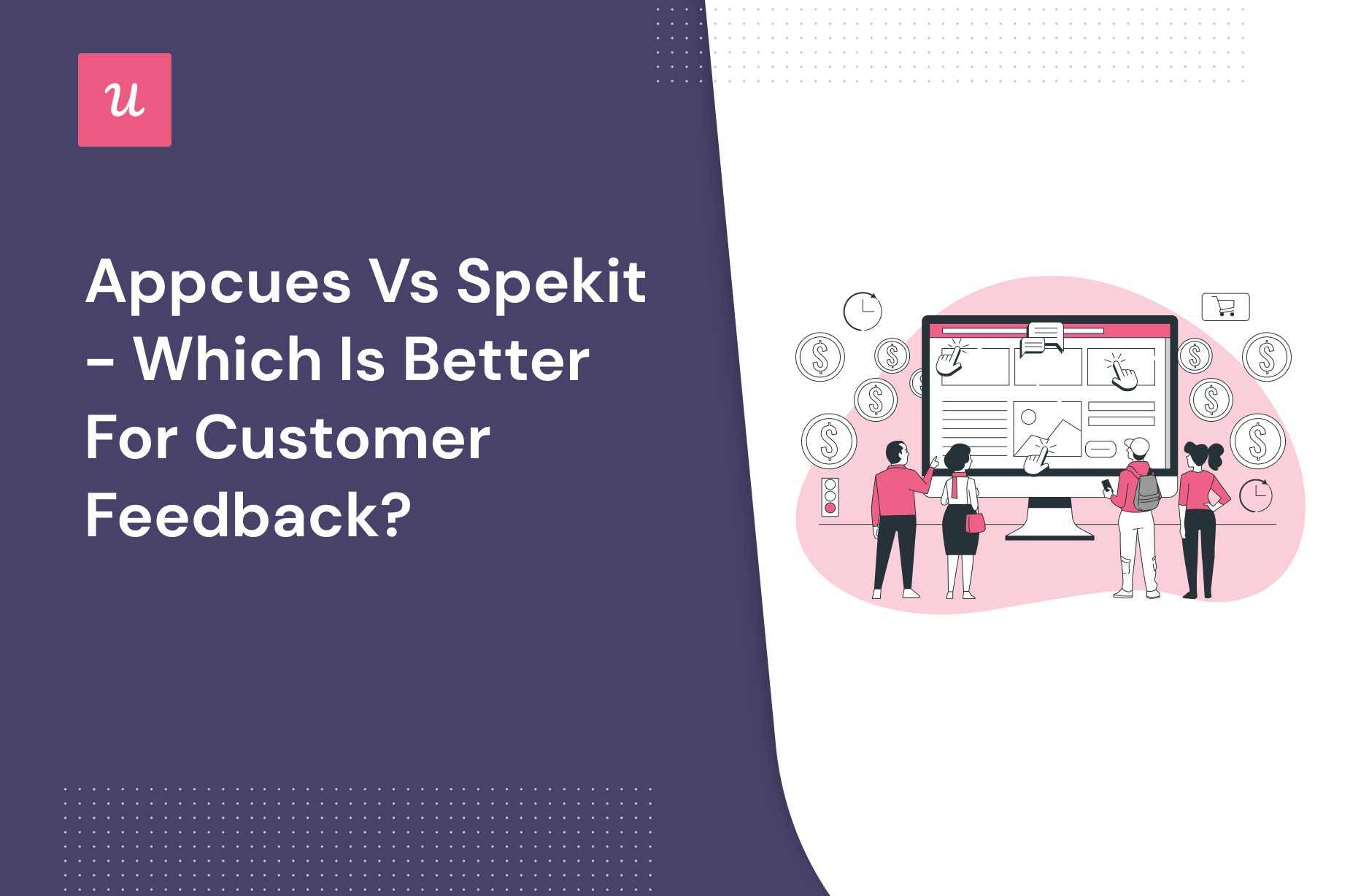
Appcues or Spekit – which is the best tool for customer feedback for your SaaS? And is there a better in-app onboarding software that would better fit your needs?
With so many alternatives on review sites, we know it’s really tricky to choose “the one”. We’ll spill the beans though – Spekit is not really a customer feedback tool, you can use it for employee feedback collection, that’s it. Why choose Appcues though if Userpilot can provide you with a more robust customer feedback toolkit, without the hefty price tag?
So in this post, we’ll compare their functionality for customer feedback, and explain in more detail why Spekit is not the best choice.
TL;DR
- Collecting customer feedback is an important task for any product team. It helps you understand your users’ needs, and the weaknesses of your product, and collect real-time usage insights to inform future feature and product decisions.
- Customer feedback tools are essential for your team to be able to collect user feedback at scale, without being reliant on your engineering and data science team for launching and analyzing surveys.
- A good customer feedback tool should have a certain set of features: 1) the ability to create different forms of micro surveys, such as NPS, CSAT, CES, and PMF to collect contextual feedback; 2) the ability to customize the surveys to match your native UI; 3) Ability to segment the user and trigger the surveys by the different segments. 4) Ability to analyze the results – both quantitative and qualitative.
- Product adoption tools with in-built survey functionality are common choices for collecting user feedback for SaaS product teams.
- Appcues and Spekit are popular digital adoption platforms. Such tools are commonly chosen also for collecting customer feedback in-app as well, but a word of warning here: Spekit is mostly an employee adoption platform and doesn’t offer customer feedback collection tools and more advanced analytics. You can only build short surveys designed to quiz your employee’s knowledge about the platform they are using (e.g. Salesforce).
- Appcues customer feedback functionality offers an easy way to build in-app surveys like the NPS without coding, but there’s no way to analyze the feedback – which kind of defies the purpose of using Appcues for this use case. You can’t tag your NPS/survey responses in-app and use these tags to segment your audience by them. You cannot analyze the data directly in Appcues – you can only download a CSV report to start analyzing your data. Moreover, Appcues is quite pricey – the Traction plan that allows you to make the most out of customer survey tools starts at $10,500.
- What’s the alternative if you don’t want to pay that hefty price? Userpilot offers the best value for money when it comes to product engagement and customer feedback in one. The tools have an easy setup of the in-app customer feedback surveys, full customizability, and in-app analytics options, and yet – it’s perfectly affordable with plans starting at $249 per month!
- Userpilot’s new robust surveys offer a range of interactive in-app surveys featuring NPS, CSAT, CES, and PMF. You can fully customize the survey look and feel and set the trigger frequency and specific targeting. Then, you can analyze the scores, tag responses, and use the data to create specific user segments.
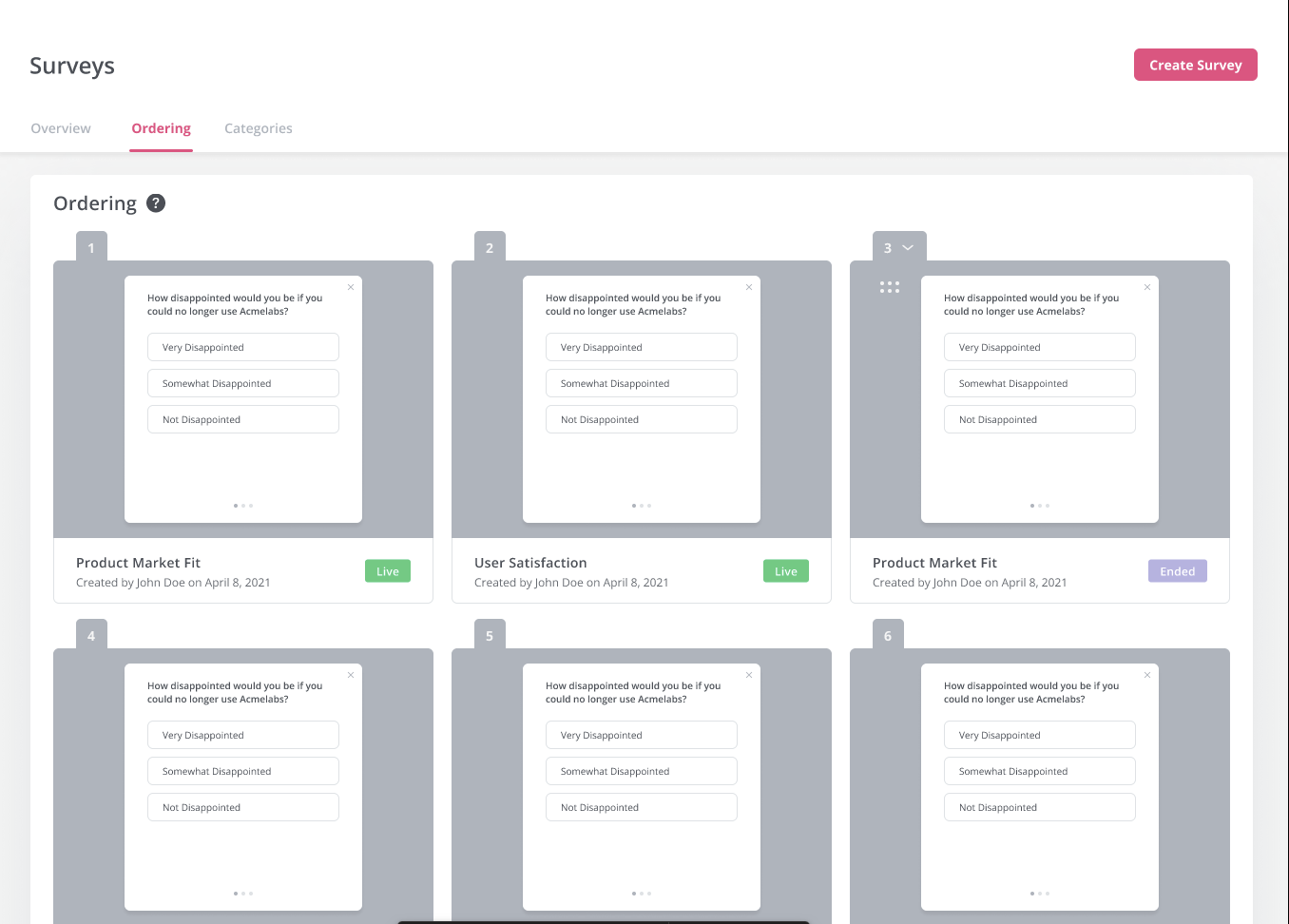
- Userpilot lets you be in charge of who gets which survey type and when with advanced segmentation capabilities, and of course, you can use the answers to segment your audience.
![]()
Looking for the best tool for customer feedback? Search no more!

What is customer feedback?
Customer feedback is any information provided by customers about their experience with a product or service. By analyzing customer feedback, you can reveal their level of satisfaction and pinpoint areas for improvement.
Why should you care about customer feedback?
Customer feedback is important if you want to truly serve your customers and come up with solutions that can solve their pain points.
Here is why customer feedback matters:
- Understand whether customers see value in your product and if it meets their needs.
- Uncover weak spots of your product and bottlenecks that disturb the customer journey.
- Make your customers voices heard and acknowledge them that they are important to you.
- Collect real-time insights on the go as you’re introducing new features or product updates.
Why do you need tools for customer feedback?
Wondering why you even need a customer feedback tool? There are several reasons why you may need one:
Collecting customer feedback should be a standard procedure for any product team. It should be consistent and gained across different stages of the customer journey so you can measure customer experience in different situations. This might be time-consuming but thanks to customer feedback tools, the process can be hassle-free and literally without any coding.
Here’s how customer feedback tools help.
- Create different forms of micro surveys, such as NPS, CSAT, CES, and PMF to collect contextual feedback.
- Customize the surveys so they are aligned with your brand and match the interface of your app.
- Segment customers by their feedback so you can create personalized flows for them.
- Conduct a user sentiment analysis to understand your customers better.
Now you might ask yourself, how to choose the right customer feedback tool for your SaaS? This is what we will be discussing next.
Tool’s must-have features for customer feedback?
Before deciding which customer feedback tool works best, you should understand what features any solid tool must provide.
Here’s what to look for before making a buying decision:
- Make sure the tool you choose supports multiple forms of micro surveys. The most important and popular ones for collecting customer feedback include the Net Promoter Score, Customer satisfaction score, Customer effort score, product-market fit survey, etc.
- You should also get customization capabilities so that the surveys you create match your interface and don’t look odd. No tool branding is also preferable.
- Feedback analytics and response monitoring are the next key features if you want to not only collect feedback but also analyze it and understand the intent behind your customers’ scores.
- Integration with 3rd party survey and analytics tools so you can enrich your surveys to make the most out of the customer feedback.
There you have it. These are the basic features you should be looking for, but the tool you should go with must be dependent on your specific goals. You might need a tool that must cover all of these features but if you don’t need complex features, you should be completely ok with a tool with limited functionalities.
Appcues for customer feedback
Appcues is another no-code user onboarding platform that helps non-technical teams track and analyze product usage. You can publish in-app onboarding tours, announcements, and launch surveys.
Unlike Userpilot, the functionality is limited if you are using the basic plans.
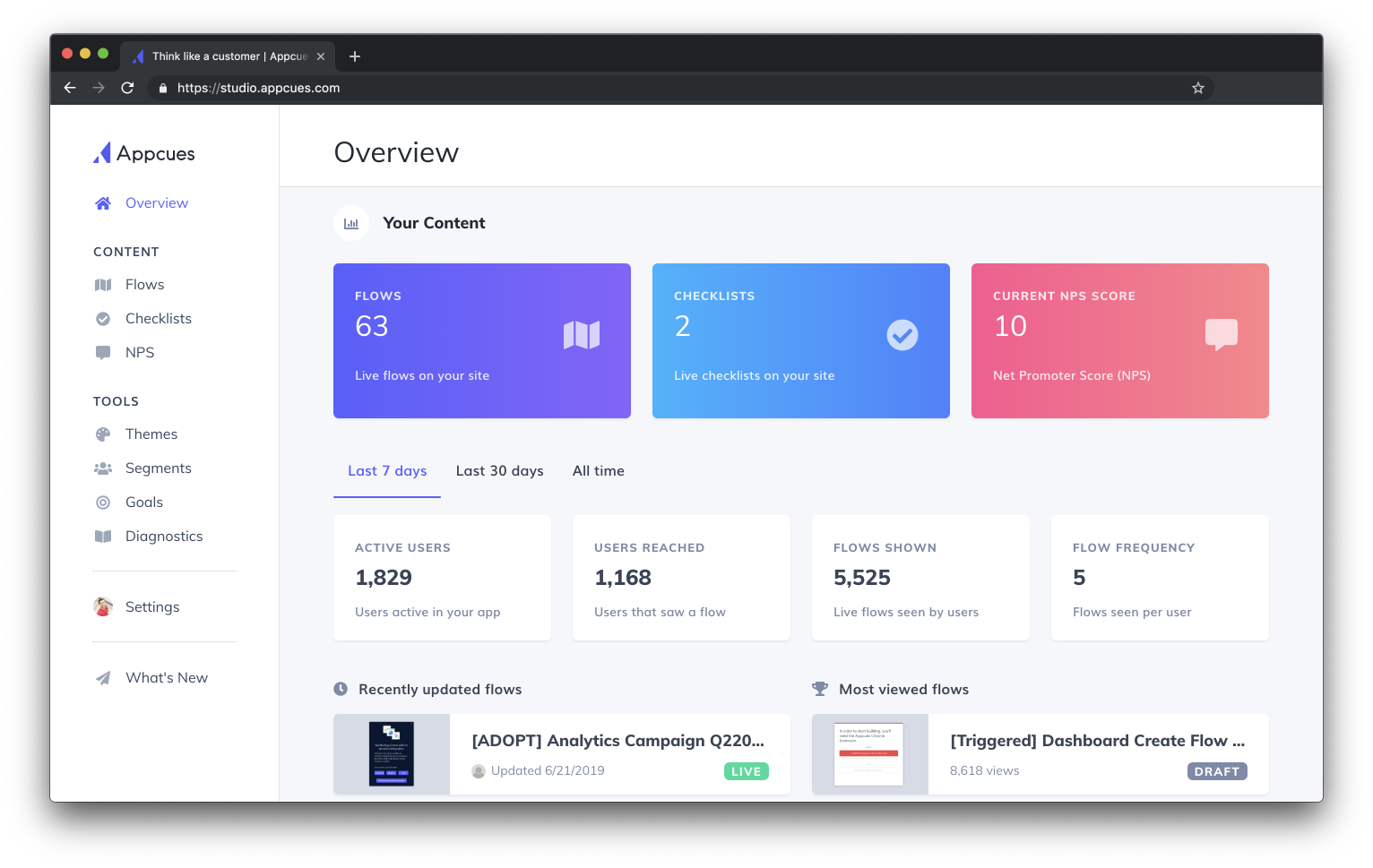
Can you use Appcues to collect user feedback? Of course.
Collecting data is not hard, analyzing and acting on it is where it gets tricky. What’s the purpose of having data if you can’t act on it?
If you want to track your NPS score over time and collect user feedback with short micro surveys, you can do that with Appcues. But to analyze the feedback data in-depth, you’ll have to use other tools.
In a nutshell, Appcues allows you to:
- Build and trigger NPS surveys in-app without coding.
- Edit the NPS survey questions.
- Target the survey at a specific user segment (or choose one of the predefined segments) and adjust the survey display frequency.
- Collect user feedback with short surveys built on top of modals: add numerical scale, open-ended questions, or radio button questions.
- On the flip side: you can’t tag your NPS/survey responses in-app and use these tags to segment your audience by them.
- You can’t analyze the responses in-app. You can only download a CSV report to start analyzing your data – and we all know how time-consuming that is.
Based on the above, when it comes to user feedback, Appcues is not the ideal tool, as it lacks the ability to segment users based on survey responses.
Pros of Appcues
Let’s look at some key advantages of Appcues:
- It makes it easy to build product tours with a user-friendly UI and predefined templates that can save you time.
- Can be used on web apps and mobile apps too.
- It integrates with most user analytics tools: Heap, Segment, Amplitude, and Mixpanel. This compensates a bit for the lack of in-depth analytics but means you need multiple subscriptions.
- You can use predefined flows or build your own using a good range of UI patterns.
- Allows basic segmentation and event-based flow triggering.
- It’s easy to build in-app surveys using modals or the integrated NPS tool.
Cons of Appcues
But as any tool, Appcues is not without its flows – and at this price point, we think you may really want to consider some options that offer the same or more advanced functionality, but at a lower price tag:
- Appcues lacks certain transition actions like driven actions, scroll position, or page change, which would make product tours more interactive.
- It heavily limits the functionality available in the lowest (Essentials) plan. If you need checklists, more than 10 events, or more than 5 user segments, you’ll need to upgrade to the Growth plan (starting at $879/mo payable annually, which means you need to fork out more than $10,500 to start using Appcues for more use cases.
- Appcues doesn’t have a resource center feature, meaning you can’t use it to offer self-service support to your users.
What users say about Appcues
What do Appcues users share about their experience? Overall users feel positive about Appcues.
Here’s an example summarizing some key points about its features and the value it offers. You can find more reviews on G2 or Capterra.
The best part of Appcues is the guided tour features which they call flaws. Especially on a team with limited resources, it allows you to improve your activation and engagement overnight by using this feature to guide your users around your product. What I love even more is the design and UX features are modern unlike other tour tools we’ve researched, and the software is easy-to-use with the need for a developer after the initial installation. – Raeann F.
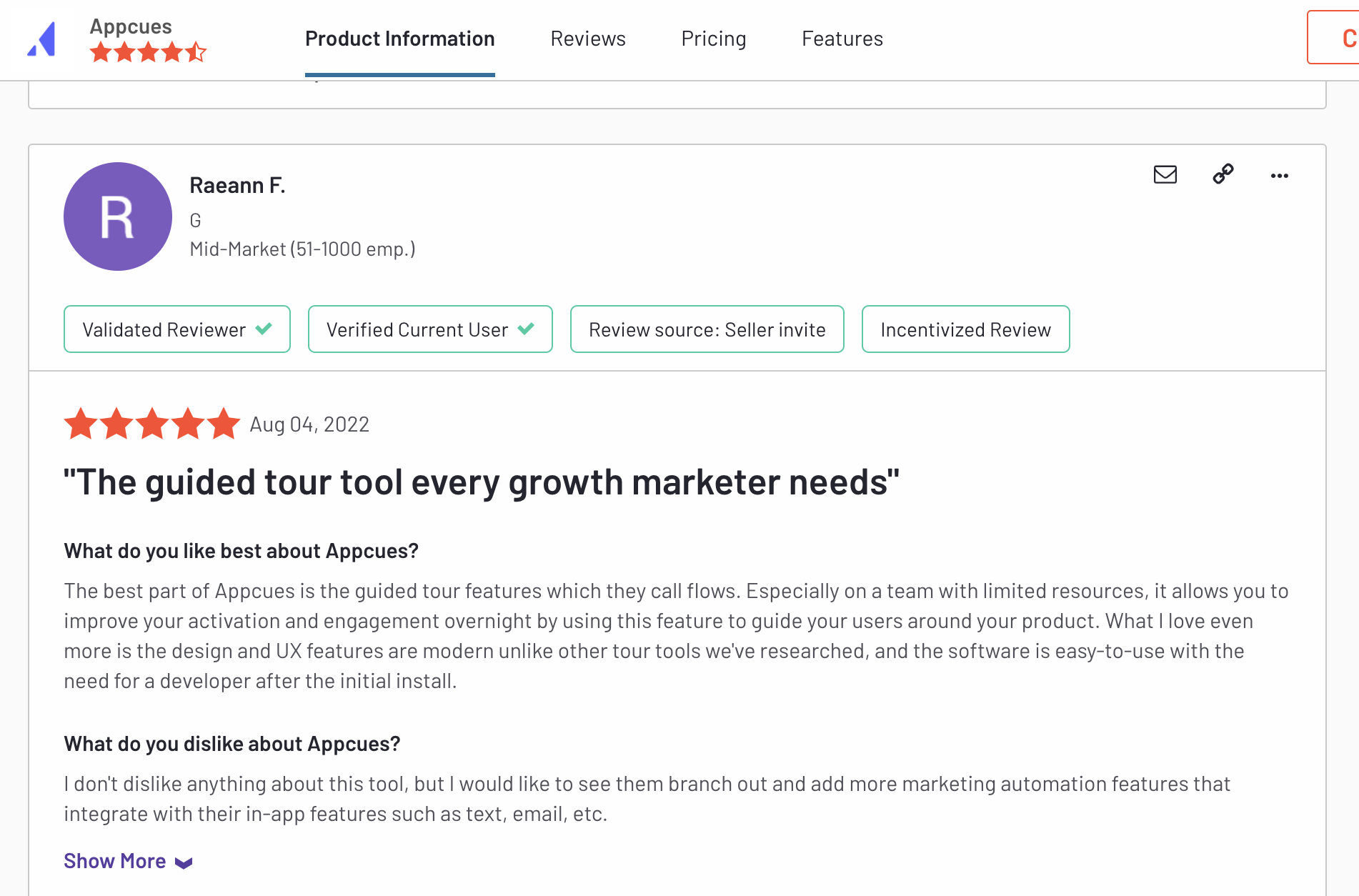
However, there are some points that could be improved:
As with all software, you will run into irritating limitations. Appcues does collect a lot of data that could automatically be turned into user attributes (like the first log-in or visits per month) but they don’t do that. Jumping between the build mode and the studio can also become very confusing at times. – Ville T.
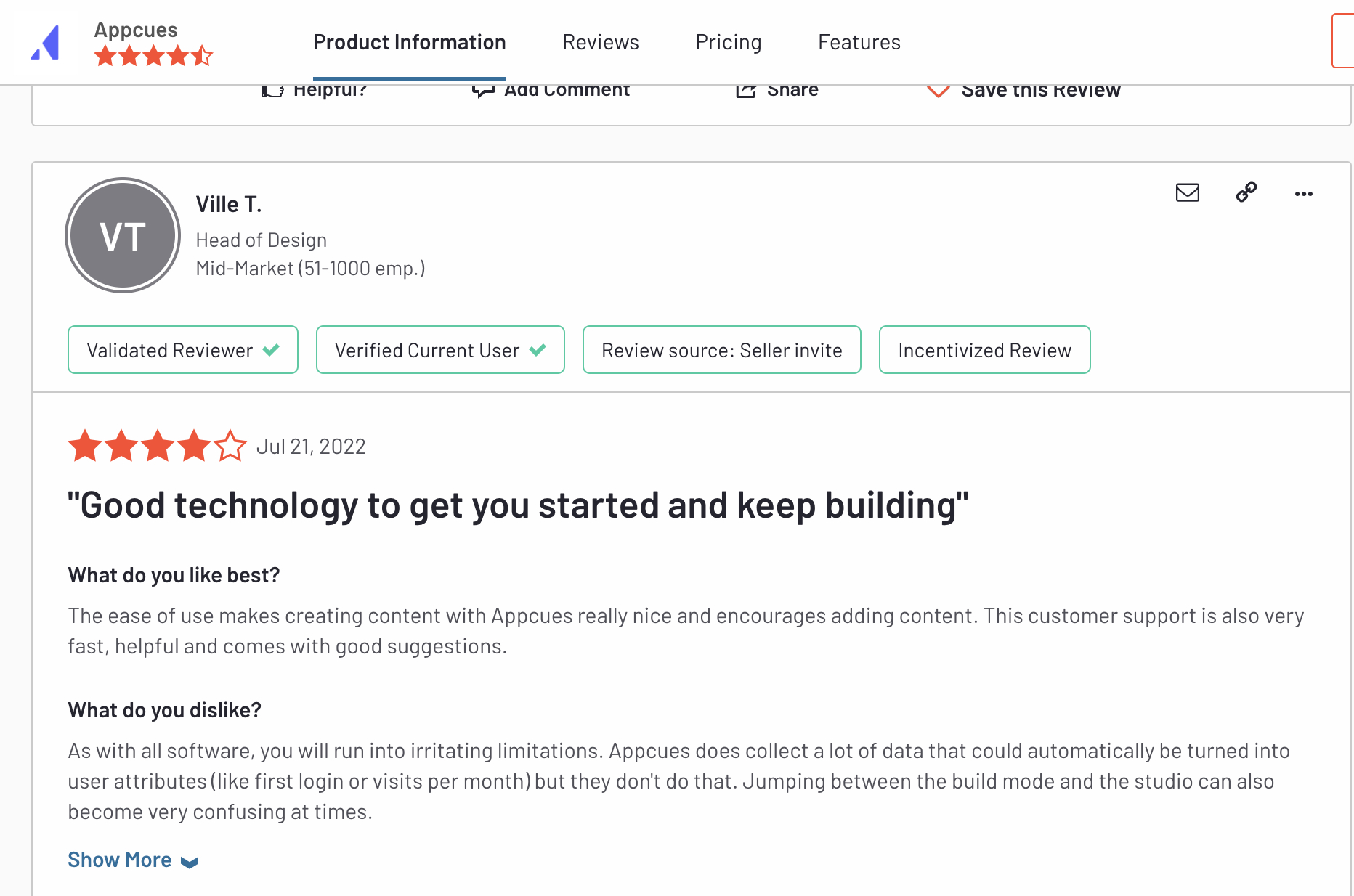
Is Appcues the right fit for your business?
There are good and bad when it comes to using Appcues but to sum it up, here’s why you might need an alternative:
- You need to build complex user flows and target them to specific user segments. In this case, you will need more than basic segmentation.
- You want to track product usage properly and don’t want to be limited by Appcues’s event explorer.
- You want to take full advantage of all onboarding functionalities (like a checklist) without paying a premium crazy price for them.
Appcues pricing
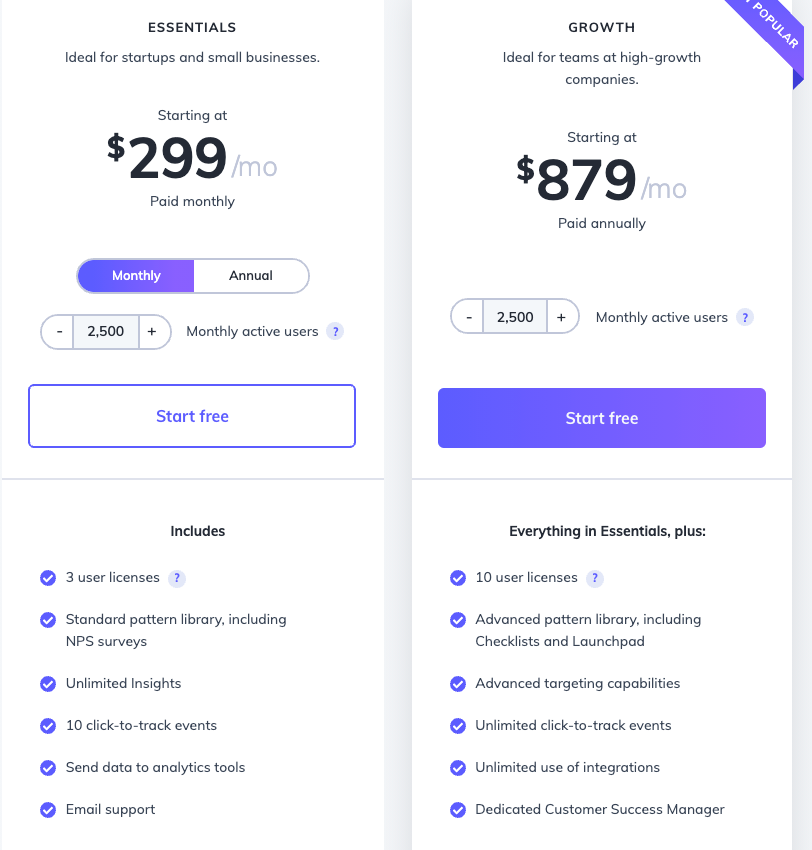
All things considered, Appcues does not offer the best value for money compared to some Appcues alternatives – at $249 per month. If your product has 2,500 active users, the costs for different plans are:
- Essentials: $249/month (Up to 3 user licenses)
- Growth: $879/month (Up to 10 user licenses)
- Enterprise: Custom (Unlimited user licenses)
![]()
There is a better tool for your SaaS than Appcues!

Spekit for customer feedback
Compared to the other solutions on the market, Spekit is a digital adoption platform that focuses on employee onboarding rather than user onboarding. Their technology is excellent for using targeted feature adoption flows to quickly familiarize new employees with internal capabilities.
Spekit prides itself on the robustness of its internal database system.
Employees and managers can easily add, update, and search for information, so everyone is aware of internal best practices. This database can also assist new employees to get up to speed quickly, as they can use the database rather than bugging other employees when they have questions.
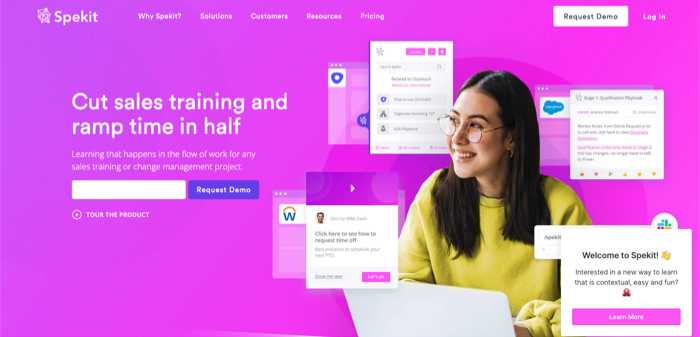
Here’s what you can do using Spekit’s Knowledge checks:
- Build short surveys designed to quiz your employee’s knowledge about the platform they are using.
- Trigger those surveys in-app to specific user segments.
- Determine who passes based on your selected answers and required completion.
Not exactly user feedback, but the surveys you can build with Spekit are interactive and accessible in-app, which increases engagement with them. If you want to collect true user feedback in various stages of the journey you should look at a different tool.
Pros of Spekit
Spekit is a useful tool for your employee onboarding needs. Here are the main advantages to consider if you’re still deciding:
- It’s easy to use and easy to install in any web-based application.
- You can create versatile knowledge bases with different formats for different teams.
- Your new employees have answers to their questions in one place. So instead of interrupting other employees’ work, they can easily find what they are looking for with Spekit.
- You can collect a data dictionary that will be available to your users across different apps.
Cons of Spekit
The main downside that comes with Spekit is the absence of feedback collection and more advanced analytics. Here are the main cons of the tool:
- There are some limitations to user onboarding flows as Spekit only offers tooltips and modals as part of their flows UI patterns.
- There are many bugs and performance issues when using the tool. The UI is also fairly tricky to navigate as the tool is on the right-hand side.
- As the tool is missing some advanced analytics, it’s hard to find friction points and solve any issues with user experience.
What users say about Spekit
On the whole, users feel positive about Spekit – here are some examples summarizing some key points about its features and the value it offers. You can find more reviews on G2 or Capterra.
The in-app guidance using field speks and the ability to view step by step instructions side by side using the sidebar dock have been a game changer for our organization!
The only downside I can think of is the use of the extension. I’ve had to “nag” users over and over again to get them to download it and discover all the magic that comes with it. – Samantha L.
The plug in is intuitive, easy to use and makes finding answers/solutions easy and efficient. For months we had tons of valuable resources and collateral that went untouched because reps didn’t know it existed. Now they have it right at their fingertips.
Our only pitfall was the flows piece. We aren’t able to leverage as easily as we would like.
-Administrator in Information Technology and Services/mid-market.
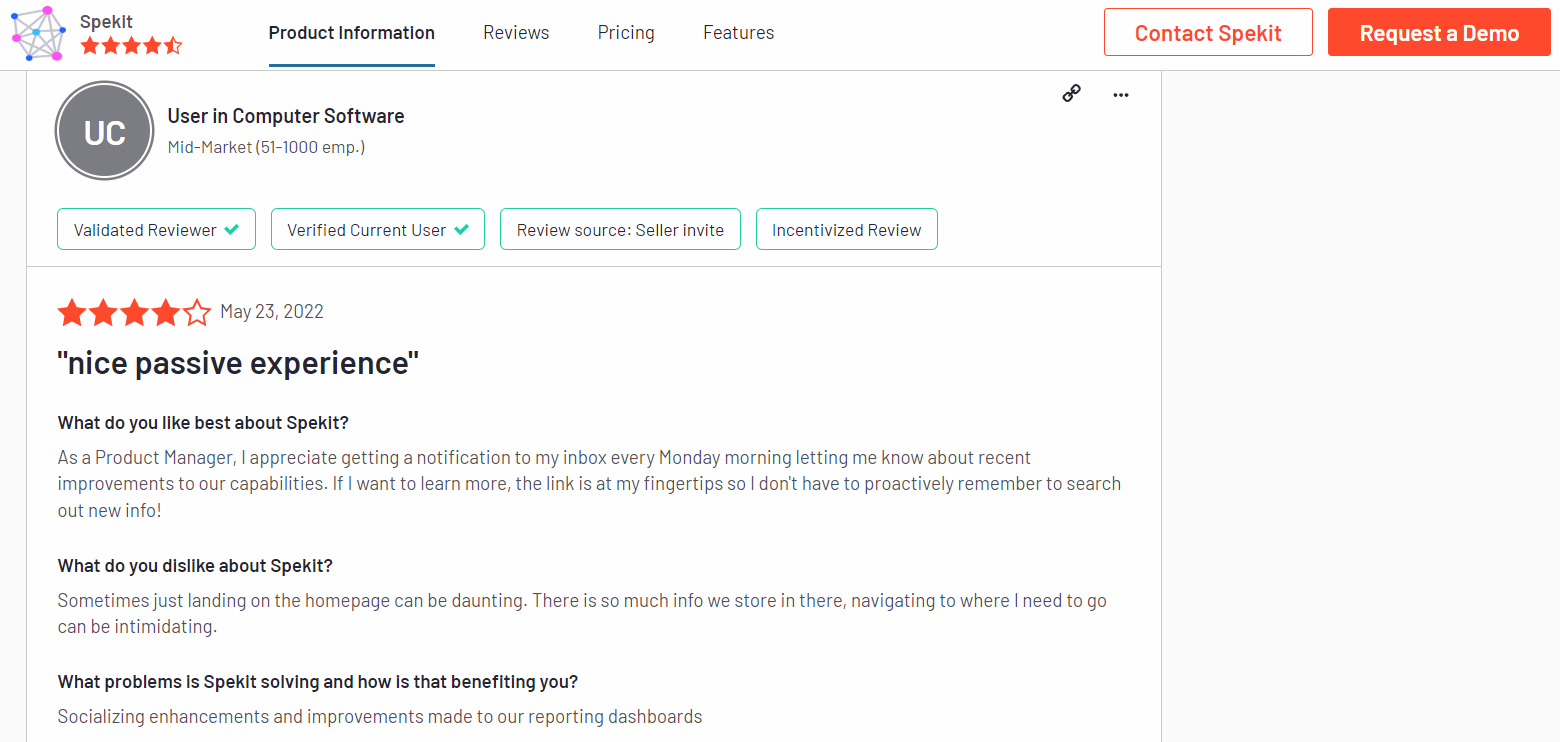
Most complaints about Spekit are about the upside bar positioning and some implementation issues.
” Great Idea! A bit tougher on the implementation side. ” I like the idea of this platform. It’s essential to train folks where they work. The sales team was very responsive throughout the pre-sales process. Unfortunately, our experience with implementation was nowhere as easy as we thought it would be. The slack integration was inadvertently set up internally before the full implementation. This caused an issue (which is understandable), but it took 4+ weeks for Spekit to determine the root cause. This has still not been addressed, unfortunately. Because of the difficulties with implementation/embedding into our environment, we are focused on one value proposition only: the slack Q&A creation process. We’ve needed to purchase other software that will better meet our needs. – Executive Sponsor in Information Technology and Services / Enterprise
Some users think it still has room for improvement.
“Nice, but needs work“. Customizable content, but we don’t have the capacity for someone to always manage that. Button position is very inconvenient, even though I know I can move it around. Don’t need the sidebar. I would also like to toggle off the buttons near things I have already learned so that I am not always interrupting work flows to click out of a window that I have mistakenly opened. – User in Airlines/Aviation / Mid-market
While other people think it’s overpriced.
“It’s cool, but overpriced in my opinion.” Extremely flexible. Lets us do things we wouldn’t be able to otherwise and is pretty easy to use. It looks a little funny on the screen. Kind of clutters up the screen. It looks a little funny and is too expensive in my opinion. – Administrator in Newspapers
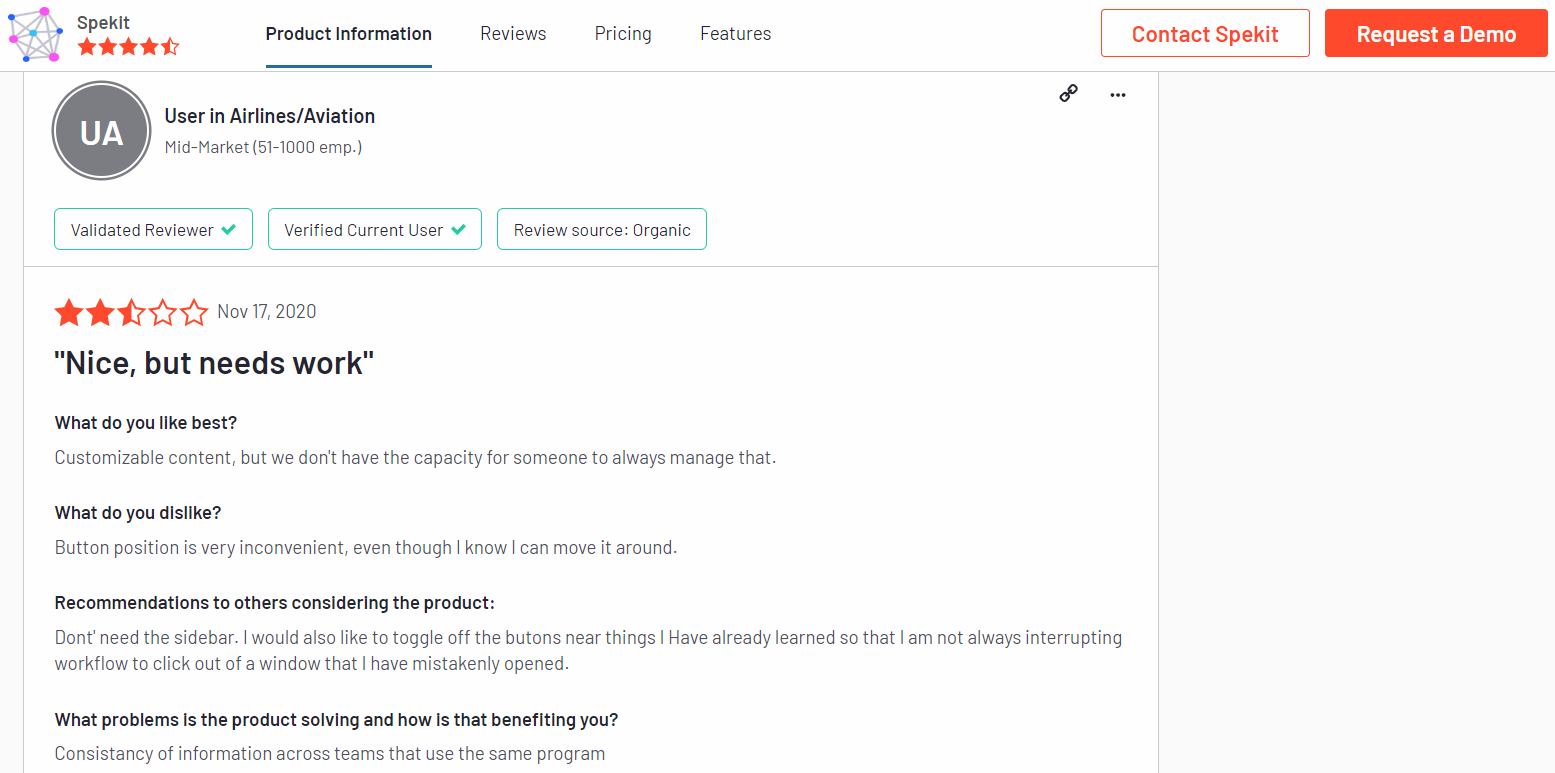
Is Spekit the right fit for your business?
Spekit is a great tool when it comes to employee onboarding but has limited usability. Here are three main reasons why you might consider an alternative.
- Spekit focuses on employee onboarding but in most cases, you will need another tool that will provide you with in-depth analytics. There are other tools that are truly no-code.
- Spekit has a fairly tricky UI to navigate as users have encountered performance issues when using the tool.
- If you want to create more contextual onboarding with different segments, you might want to consider an alternative tool.
Spekit pricing
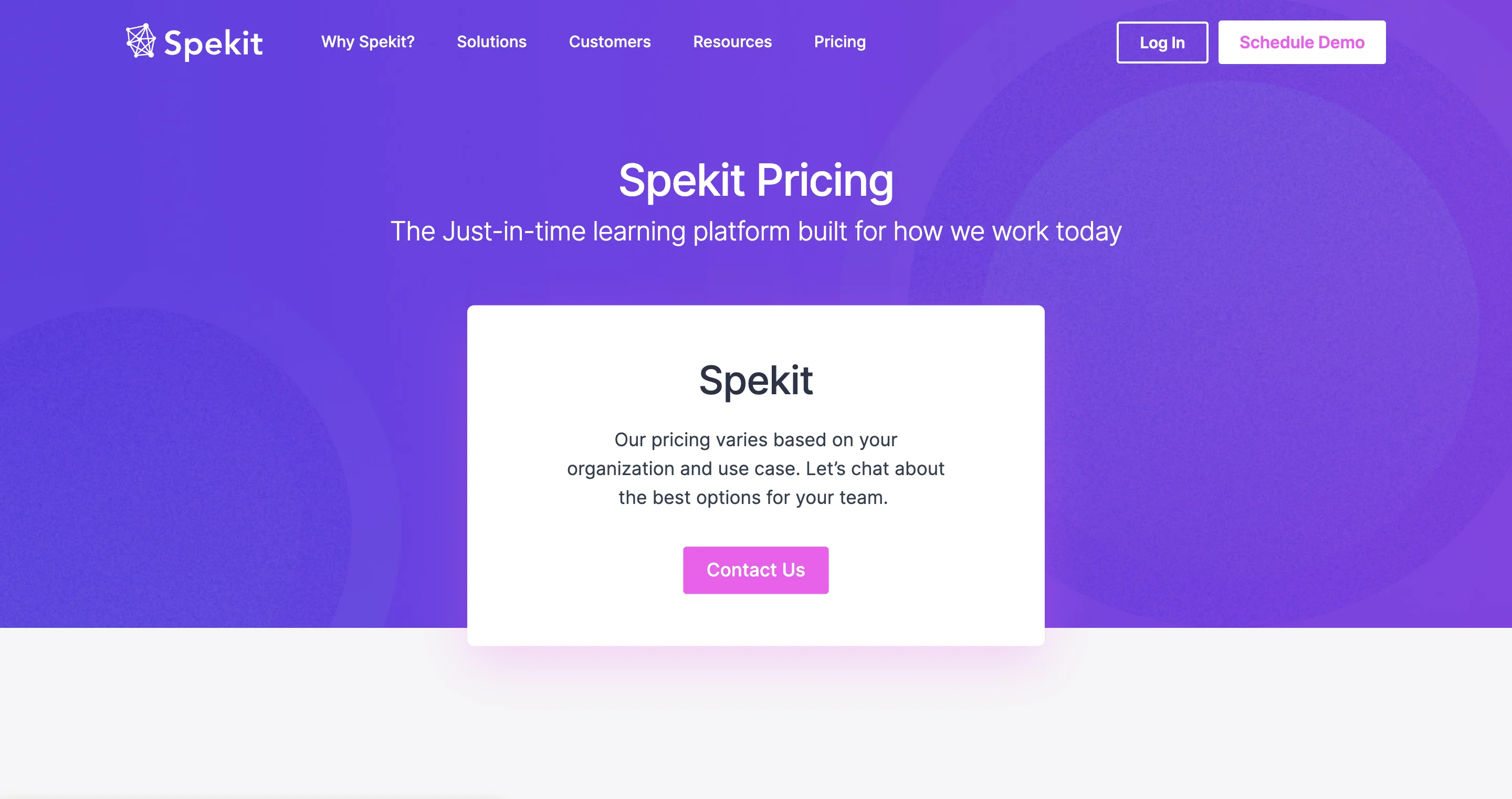
Spekit has recently updated its pricing policy. The price will vary depending on your organization and specific use cases.
Previously, Spekit charges 20 $ per person monthly so it’s more suitable for small to midsize businesses. It also doesn’t provide a free trial or a freemium version of its features.
Some features such as seismic integration, knowledge checks, and knowledge check analytics are sold as add-ons that come with an extra fee.
![]()
There is a better tool for your SaaS than Spekit!

Is there a better alternative for customer feedback?
Appcues and Spekit are good tools for customer feedback. We’ve seen how they compare to each other and what you can achieve with them. Call us biased, but if you’re looking for something better, Userpilot offers more value for your money than these tools.
Userpilot for customer feedback
Userpilot is a powerful product adoption platform that enables you to quickly build personalized, flexible, contextually relevant in-app experiences targeted to different user segments – all without writing a line of code.
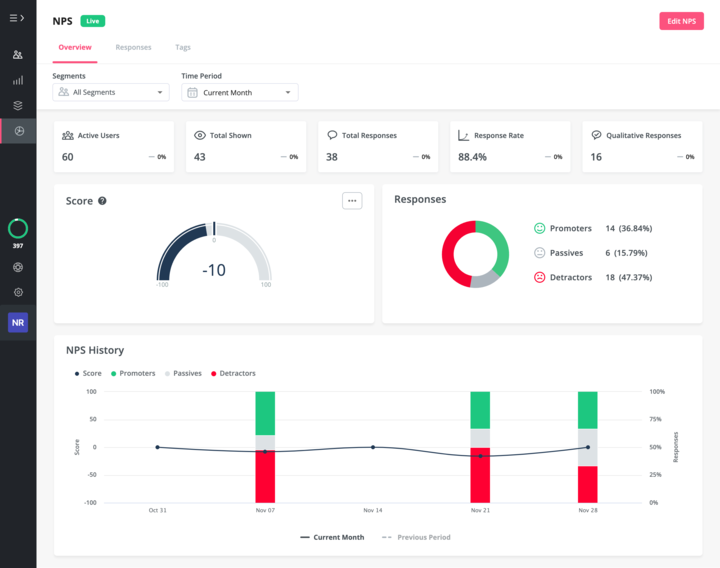
There are two types of feedback you should be focusing on collecting to better understand the health of your product and users.
First, you have user sentiment which looks at user satisfaction and effort scores or loyalty (using NPS surveys). Then you may also want to collect feedback on the functionality of the product or specific features.
You can do all these with Userpilot. In short, you can:
- Collect and track (NPS) in-app with a built-in NPS widget that allows you to fully customize the survey look and feel, and set the trigger frequency and specific targeting.
- Analyze NPS scores, tag responses, and use the data to create specific user segments. Also analyze your survey feedback in detail:
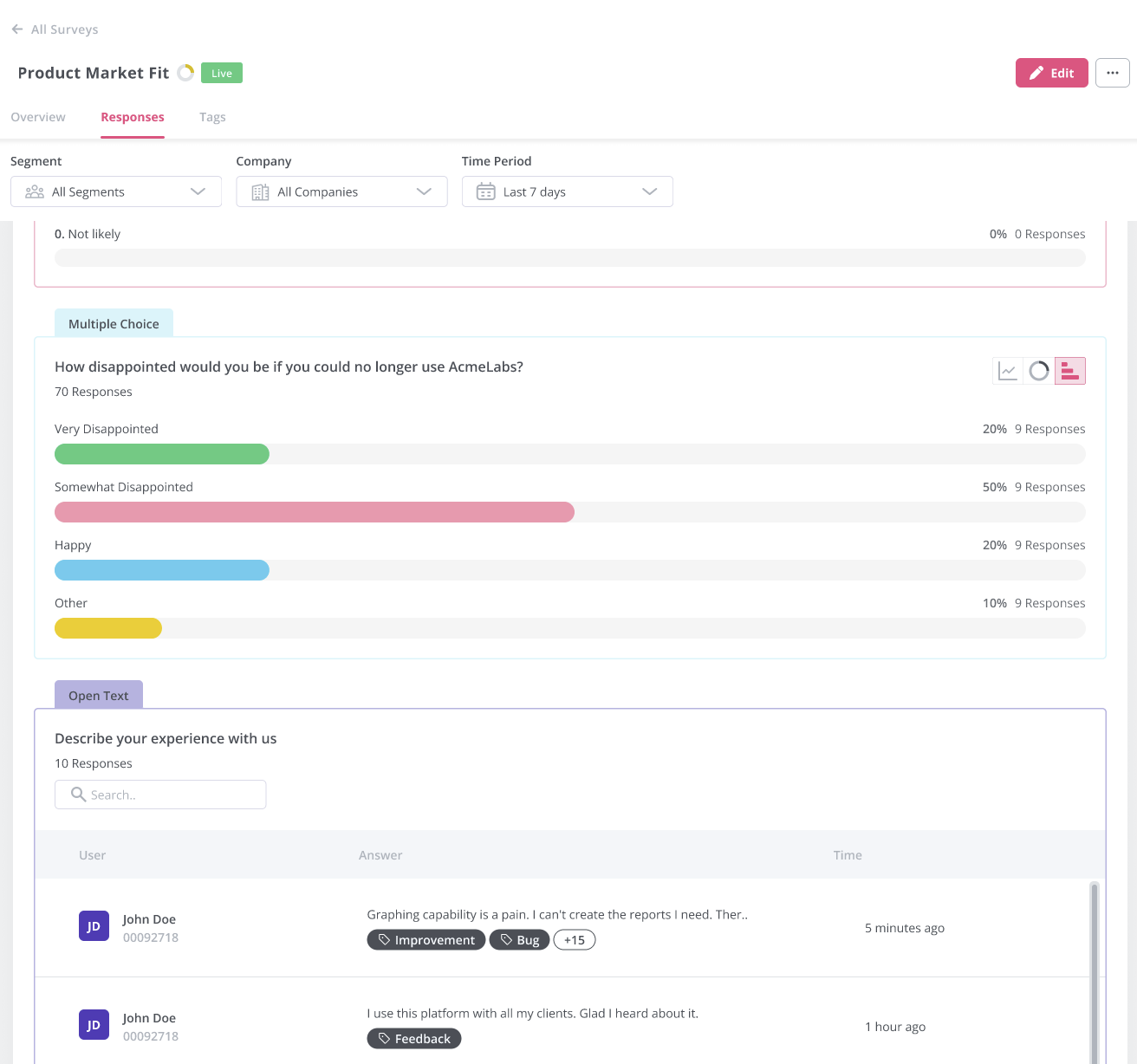
- Build and trigger in-app micro surveys like the classic PMF survey, or similar ones and mix multi-choice and open-ended types of questions to collect specific insights.
- Be in charge of who gets which survey type and when with advanced segmentation capabilities, and of course, you can use the answers to segment your audience.
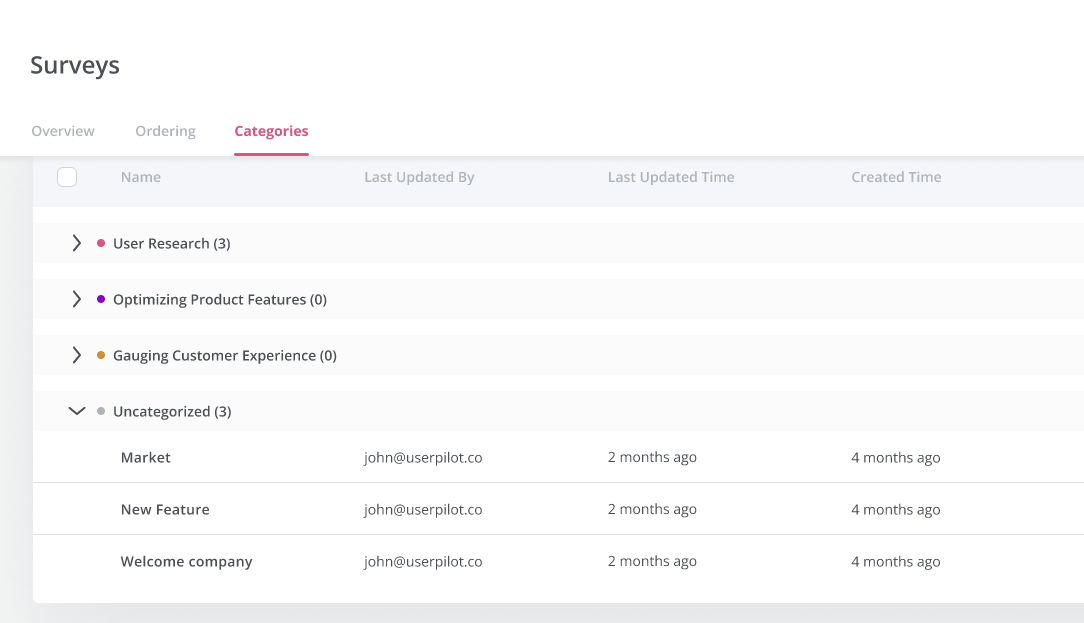
The advantage of using Userpilot for collecting feedback over other survey tools is that you can better control who sees the surveys but also you can instantly use the data collected to segment your user base and trigger the right experience for them.
For instance, if your users give you a low NPS score because they think you’re missing a critical feature (that you actually have already), you can push an interactive walkthrough guiding them to find and explore this feature.
Pros of Userpilot
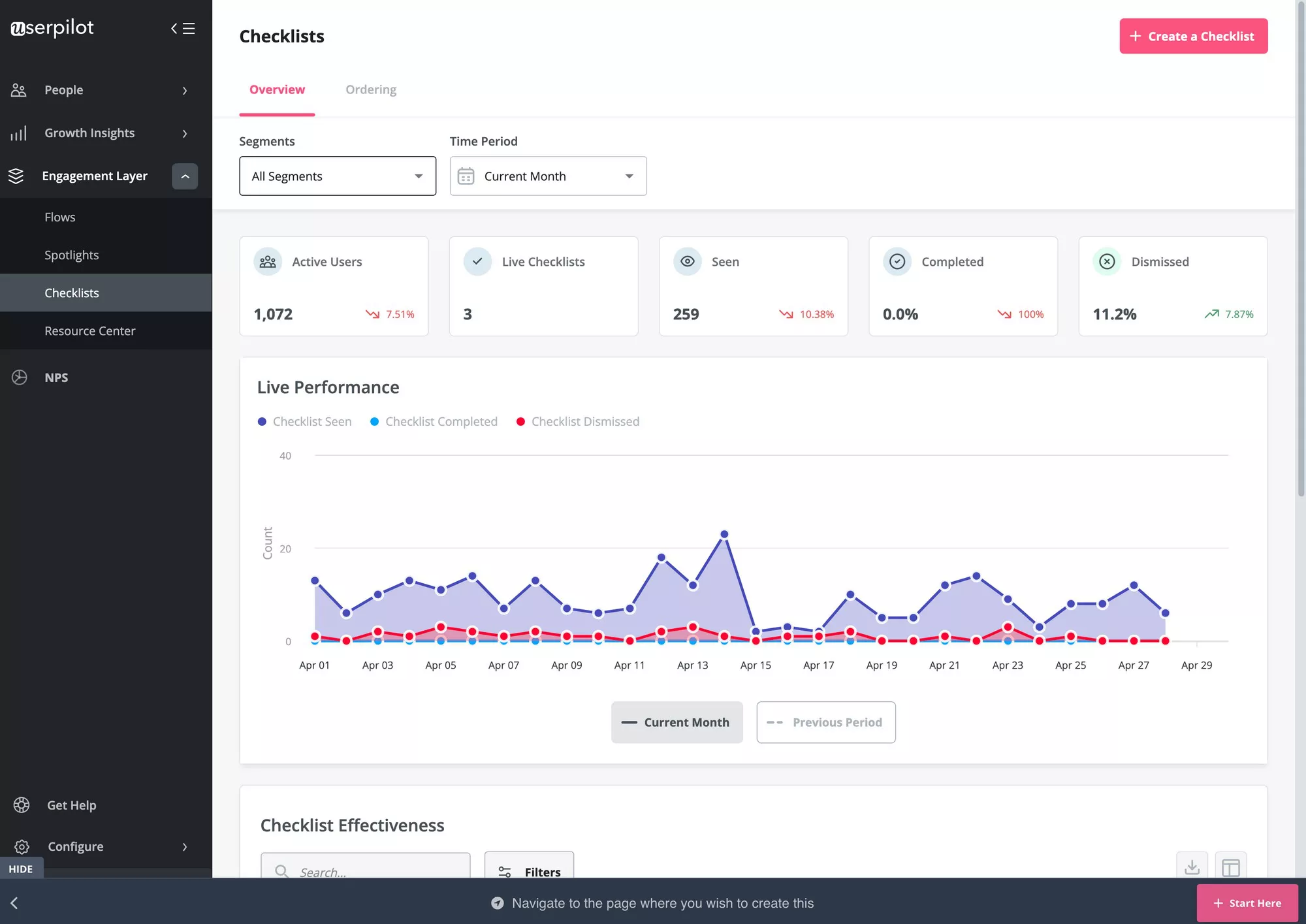
Userpilot has a number of advantages, especially for mid-market SaaS companies looking for a robust but at the same time very easy-to-use, no-code tool for user onboarding, product adoption, and simplified product analytics. Let’s have a look at the pros of using Userpilot:
- No-code builder – Userpilot comes with an easy-to-use Chrome Extension builder.
- Multiple UI patterns – choose from a range of options to build customized flows: modals, slideouts, banners, tooltips, hotspots, and checklists are all at your disposal
- UI patterns are not limited by plan – you get access to all of them on every single plan, meaning you get value even with the Traction plan (this is the entry-level one).
- Engaging walkthroughs and onboarding flows- build interactive walkthroughs targeted to distinct user segments.
- In-app help – build a resource center offering self-service support to your users, customize it with your branding, and select from a range of help options to boost user satisfaction (i.e. videos, in-app flows, chat, and more).
- Experimentation – built-in A/B testing for flows lets you explore and quickly iterate based on direct user behavior.
- Powerful feedback options- integrated NPS surveys with analytics and response tagging unlock insight into how your users feel.
- Advanced analytics and segmentation- analyze product usage and in-app flow engagement and build user segments using the data.
- Event tracking and feature tags- tag UI engagement (clicks, form fills, hovers) and group them into one custom event to track what really matters.
- More value with integrations- unlock value faster with built-in integrations with popular tools like Segment, Amplitude, Mixpanel, Kissmetrics, Intercom, Heap, and more.
Cons of Userpilot
As with any tool, Userpilot also has some disadvantages though:
- Browser/web app only – Userpilot won’t run on mobile devices/applications.
- Doesn’t support employee onboarding- The tool is better suited for customer onboarding than for employee onboarding as you can’t build in-app guides on third-party tools.
- Missing integrations – doesn’t have built-in integrations with some tools, but it has webhooks, and Hubspot and Zapier are coming soon.
- Not appropriate for small startups on a shoestring budget (<$100)- Userpilot is a powerful, mid-market to enterprise-level tool. So $249 a month might be too expensive for really small startups.
What users say about Userpilot

Let’s check what real users like about Userpilot.
Userpilot is an incredible, user-friendly software that allows us to create unforgettable experiences for our clients! From basic to complex experiences, we have been able to do them all with ease! I would highly recommend this software to anyone who wants to provide their clients or users with the best product tour experience. The possibilities of what you can create are endless! – Tayla G.
Userpilot is simple to set up, use, and does not require any dev – which means instant publishing. This is critical for us as a SaaS company that releases new features frequently; we need the ability to inform our customers of changes quickly, and doing this in our platform through Userpilot allows us to reach the right audience, at the right time, in the right place. There have been many awesome extra features we’ve discovered since coming on board, and it’s been great to see new features released frequently. The tool itself is intuitive and reliable. Having used similar products previously that were clunky and buggy this has really made us happy with our decision to move to Userpilot. – Melina K.
![]()
Get more value for your money with Userpilot!

Userpilot pricing
Userpilot’s transparent pricing ranges from $249/month on the entry-level end to an Enterprise tier for larger companies.
Furthermore, Userpilot’s entry-level plan includes access to all UI patterns and should include everything that most mid-market SaaS businesses need to get started.

Userpilot has three paid plans to choose from:
- Starter: The entry-level Starter plan starts at $249/month and includes features like segmentation, product analytics, reporting, user engagement, NPS feedback, and customization.
- Growth: The Growth plan starts at $749/month and includes features like resource centers, advanced event-based triggers, unlimited feature tagging, AI-powered content localization, EU hosting options, and a dedicated customer success manager.
- Enterprise: The Enterprise plan uses custom pricing and includes all the features from Starter + Growth plus custom roles/permissions, access to premium integrations, priority support, custom contract, SLA, SAML SSO, activity logs, security audit, and compliance (SOC 2/GDPR).
Conclusion
Hopefully, after reading this article it should be easier for you now to make an informed decision between Appcues and Spekit. Both tools come with advantages and disadvantages so there isn’t one that is the best. It will depend on your product and current needs. If you want the best value for money, going with the alternative option would be our recommendation. Want to see how Userpilot can help with customer feedback? Book a demo below.
![]()
Try the best customer feedback tool for your SaaS!


